The pros and cons of popular vegan proteins
Posted: 3 May 2021 | Gene Bruno MS MHS RH(AHG) | 1 comment
As the essential building blocks of life, protein is a crucial element of our diets. Here, Gene Bruno explores the available protein options to satisfy vegan appetites.
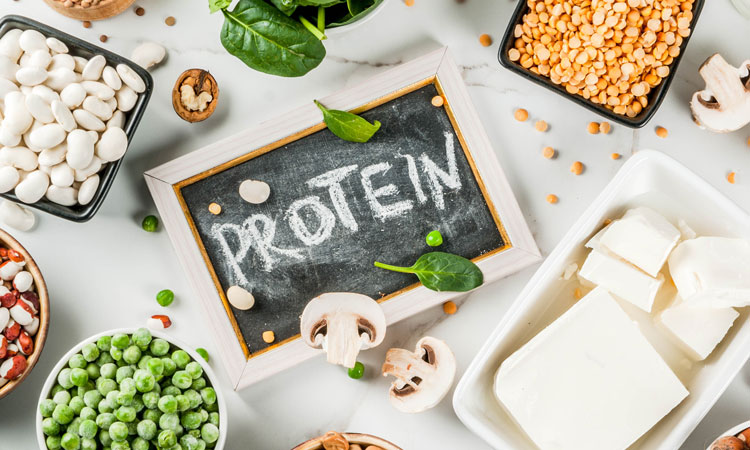

The major functional and structural component of all the cells of the body, protein, is needed for all enzymes, membrane carriers, blood transport molecules, the intracellular matrices, hair, fingernails, serum albumin, keratin and collagen – as well as many hormones and a large part of cell membranes. Furthermore, the amino acids which serve as the building blocks of protein function as precursors for many coenzymes, hormones, nucleic acids, vitamins and other molecules essential for life.
Clearly, adequate dietary protein is essential to maintain cellular integrity and function, and for good health in general.1 But which sources of protein are best? Certainly, protein from animal sources (casein, whey protein, egg protein) are considered complete protein, containing the necessary amount of all essential amino acids. However, vegan proteins are gaining significantly in popularity and this article addresses some common vegan proteins, including several of the rising stars.
Quinoa
Quinoa is increasingly becoming popular in the United States and Europe. Classified as a gluten-free pseudocereal, quinoa doesn’t grow on grass like other grains such as rice, wheat and oats. It should be noted that quinoa is also higher in protein than other grains such as buckwheat and barley, offering 16 percent protein by dry weight – significantly more than most cereal grains, including rice, barley and corn. In a randomised, placebo-controlled study,2 29 subjects received quinoa or placebo daily. Results showed that the quinoa group experienced a significant decrease in BMI (body mass index) and HbA1c (a measure of long-term blood sugar control) and an increase in satiation and fullness.
In another study,3 quinoa flakes were shown to significantly reduce serum triglyceride and increase glutathione (a powerful antioxidant) levels in postmenopausal women.
Rice protein
If you are vegetarian or someone with food allergies, you might be interested in rice protein (extracted from rice) since it seldom activates food allergies.4 However, vegetarian proteins tend to be short in one or more amino acids – known as the “limiting amino acids”- and this is also true of rice protein. Specifically, rice protein has insufficient levels of the amino acids lysine and threonine,5,6 so these amino acids are frequently added to rice protein-based products to supplement this imbalance.
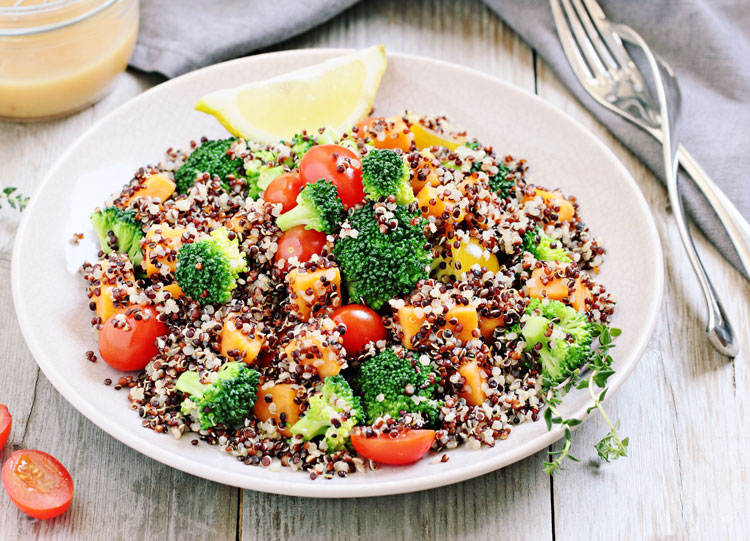

Quinoa is higher in protein than other grains such as buckwheat and barley
In any case, rice protein is still an effective vegan protein for sports nutrition and for other uses. In fact, a randomised, double-blind, placebo-controlled clinical study7 was conducted with 24 healthy, college-aged (average age 21 years), resistance-trained participants. They received either 48g of rice or whey protein isolate for eight weeks, immediately following training on training days. The results showed that rice protein isolate decreased fat mass and increased lean body mass, skeletal muscle hypertrophy (ie, size and growth), power and strength in a way that was comparable to whey protein isolate.
Pea protein
Pea protein (extracted from peas) is a particularly interesting vegan protein since it is highly digestible and also capable of helping people to feel fuller and more satisfied with their food intake.8 Specifically, in research, 20g of isolated yellow pea protein led to significantly lower food intake than the control (about 12 percent less calories), and helped to suppress pre-meal blood glucose levels compared to the control.9 This is consistent with other studies in which pea protein was compared to other proteins and found to be more effective than whey protein or other milk proteins at reducing hunger and desire to eat.10
Other benefits of pea protein have been demonstrated in human clinical studies. These benefits include significant reductions (over placebo) in systolic blood pressure11 and effectiveness for diet-induced thermogenesis.12 In addition, an in vitro study13 showed that pea protein hydrolysates provided a prebiotic effect as demonstrated by an increase in Lactobacilli.
Algal protein
The mass production of protein-rich microalgae has been considered as a possible way to close the predicted so-called “protein gap”.14 Algal protein was even studied as one of the potential sources of macronutrients in a space habitat.15 Analyses and nutritional studies have shown that algal proteins are of high quality and comparable to conventional vegetable proteins.16
Hemp protein
Hemp, which has been cultivated for thousands of years, is utilised to create a solubilised hemp protein powder. This powder has an interesting nutritional profile, providing 65 percent protein and a relatively significant source of omega-3 (3 percent) and omega-6 (9 percent) fatty acids. It also may be easily digestible with no gas, burping, bloating or intestinal distress.17
Conclusion
There are a variety of choices for vegan proteins. Currently, rice and pea proteins have some of the best research behind them, but quinoa, algal and hemp protein are also promising protein options.
References
- Food and Nutrition Board, Institute of Medicine. Protein and Amino Acids. Dietary Reference Intakes for Energy, Carbohydrate, Fiber, Fat, Fatty Acids, Cholesterol, Protein, and Amino Acids. Washington, D.C.: National Academies Press; 2002:589-768.
- Ruiz MSA, Espinosa MDB, Santamaria CG, et al. [Effect of quinua (Chenopodium quinoa) consumption as a coadjuvant in nutritional intervention in prediabetic subjects] [Article in Spanish]. Nutr Hosp. 2017 Oct 24;34(5):1163-1169.
- De Carvalho FG, Ovidio PP, Pavovan GJ, et al. Metabolic parameters of postmenopausal women after quinoa or corn flakes intake–a prospective and double-blind study. Int J Food Sci Nutr. 2014 May;65(3):380-5.
- Moro GE, Warm A, Arslanoglu S, Miniello V. Management of bovine protein allergy: new perspectives and nutritional aspects. Ann Allergy Asthma Immunol 2002;89(6 Suppl 1):91-6 [review].
- Murata K, Nishikaze M, Tanaka M. Nutritional quality of rice protein compared with whole egg protein. J Nutr Sci Vitaminol (Tokyo) 1977;23:125-31.
- MacLean WC Jr, Placko RP, Graham GG. Postprandial plasma free amino acid changes in preschool children consuming exclusively rice protein. J Nutr 1979;109:1285-9.
- Daniells S. Axiom CEO: ‘Whey now shares the sports nutrition trophy with rice protein’. March 14, 2013. http://www.nutraingredients-usa.com/Research/Axiom-CEO-Whey-now-shares-the-sports-nutrition-trophy-with-rice-protein.
- Gausserès N, Mahè S, Benamouzig R, Luengo C, Drouet H, Rautureau J, Tomè D. The gastro-ileal digestion of 15N-labelled pea nitrogen in adult humans. Br J Nutr. 1996 Jul;76(1):75-85.
- Smith CE, Mollard RC, Luhovyy BL, Anderson GH. The effect of yellow pea protein and fibre on short-term food intake, subjective appetite and glycaemic response in healthy young men. Br J Nutr. 2012 Aug;108 Suppl 1:S74-80.
- Diepvens K, Häberer D, Westerterp-Plantenga M. Different proteins and biopeptides differently affect satiety and anorexigenic/orexigenic hormones in healthy humans. Int J Obes (Lond). 2008 Mar;32(3):510-8.
- Li H, Prairie N, Udenigwe CC, Adebiyi AP, Tappia PS, Aukema HM, Jones PJ, Aluko RE. Blood pressure lowering effect of a pea protein hydrolysate in hypertensive rats and humans. J Agric Food Chem. 2011 Sep 28;59(18):9854-60.
- Claessens M, Calame W, Siemensma AD, Saris WH, van Baak MA. The thermogenic and metabolic effects of protein hydrolysate with or without a carbohydrate load in healthy male subjects. Metabolism. 2007 Aug;56(8):1051-9.
- Swiatecka D, Swiatecki A, Kostyra H, Marciniak-Darmochwał K, Kostyra E. The impact of pea protein hydrolysates on bacterial physiological activity–an in vitro study. Int J Food Microbiol. 2010 Jun 15;140(2-3):263-70.
- Becker EW. Micro-algae as a source of protein. Biotechnol Adv. 2007 Mar-Apr;25(2):207-10.
- Nakhost Z, Karel M. Potential utilization of algal protein concentrate as a food ingredient in space habitats. Sci Aliments. 1989;9:491-506.
- Becker EW. Micro-algae as a source of protein. Biotechnol Adv. 2007 Mar-Apr;25(2):207-10.
- HempSol-65 sell sheet. GRF Ingredients. http://www.gfringredients.com/gfr/wp-content/uploads/2013/04/HPP65-Sell-Sheet-2013.pdf
About the author
Gene Bruno possesses 42 years of dietary supplement industry experience, with a Master’s degree in nutrition and a second Master’s degree in herbal medicine.
Bruno currently serves as both the Vice President of Scientific and Regulatory Affairs at NutraScience Labs and Professor of Nutraceutical Science at Huntington University of Health Sciences where he has taught doctors, nurses and pharmacists about integrative healthcare.
Related topics
Free From, Health & Nutrition, Ingredients, Plant based, Proteins & alternative proteins





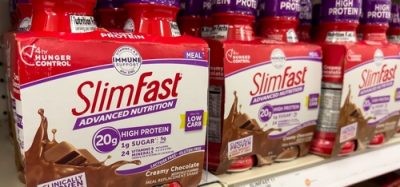
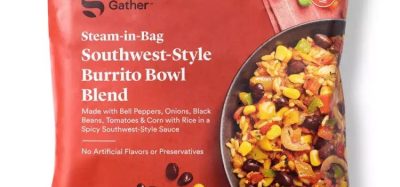
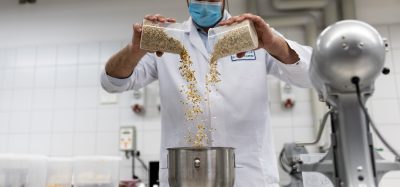


A useful and good article